#John III Sobieski
Text

King John III Sobieski by Marcello Bacciarelli.
#marcello bacciarelli#królestwo polskie#król polski#house of sobieski#kingdom of poland#john iii sobieski#king of poland
7 notes
·
View notes
Text
The Jagiellonian University a public research university in Kraków, Poland.
The Jagiellonian University a public research university in Kraków, Poland.
The main assembly hall of the university’s Collegium Maius.
The Jagiellonian University (Polish: Uniwersytet Jagielloński (UJ) a public research university in Kraków, Poland. Founded in 1364 by King Casimir III the Great.
The Jagiellonian University comprises 16 Faculties, where nearly 4 thousand academic staff conduct research and provide education to almost 40 thousand students, within the…
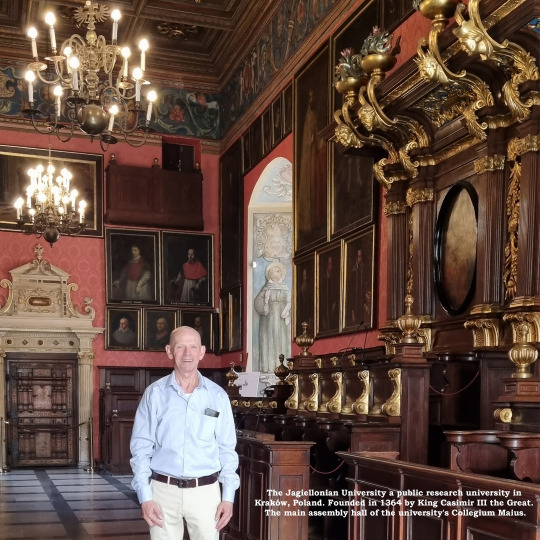
View On WordPress
#Andrzej Duda#Jagiellonian University#John III Sobieski#King Casimir III the Great#King of Poland#Kraków#Krakow#Nicolaus Copernicus#Nobel Prize in Literature#Notable alumni#Poland#Polish Enlightenment#Pope John Paul II#President of the Republic of Poland#Renaissance#Stanisław Lem#the first UNESCO World Heritage Site in the world#The Jagiellonian University#the theory of Heliocentrism#UJ#Uniwersytet Jagielloński#Wawel Royal Castle#Wisława Szymborska
6 notes
·
View notes
Video
Perfect. Jan III Sobieski. Vienna 1683 Battle Mix DJ Francuz
#youtube#perfect jan3 vienna 1683 battle polish rock polskamuzyka Król Jan III Sobieski 1683 King John III Sobieski In 1683 as Jan III Sobi
0 notes
Text

Consecrated sword presented by Pope Innocent XI to John III Sobieski - 'Lion of Lechistan' (1675)
9K notes
·
View notes
Text

ab. 1696 Hyacinthe Rigaud - Konstanty Władysław Sobieski
(Museum of King John III’s Palace at Wilanów)
98 notes
·
View notes
Text
On September 12th 1683, Polish King John III Sobieski led the largest cavalry charge in history. 18,000 horsemen charged the Ottoman troops besieging Vienna. The King led the charge at the head of 3000 Polish Winged Hussars. Today is the 340th anniversary.
57 notes
·
View notes
Text
Another one from my diploma. It’s quite old already and I think I’ll draw them all again, haha.
Marie Casimire Louise de La Grange d'Arquien (28 June 1641 – 30 January 1716), known also by the diminutive form "Marysieńka", was a French noblewoman who became the queen consort of Poland and grand duchess consort of Lithuania from 1674 to 1696 by her marriage to King and Grand Duke John III Sobieski of the Polish–Lithuanian Commonwealth.

Portraits of her under the cut:
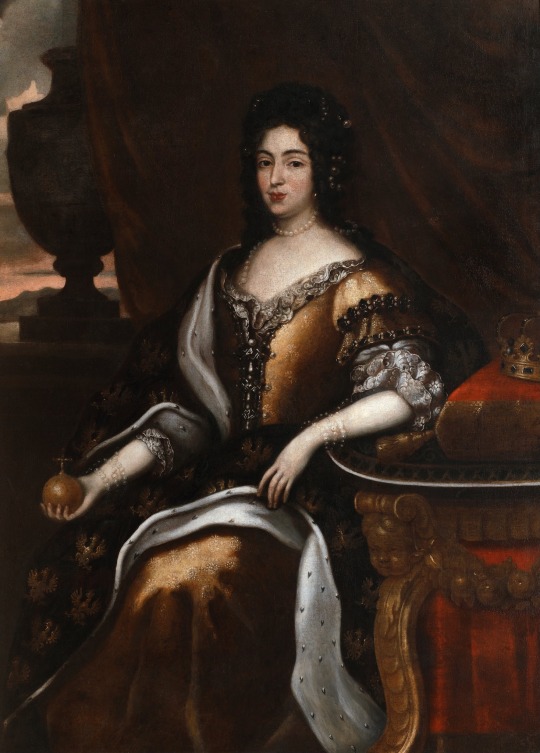
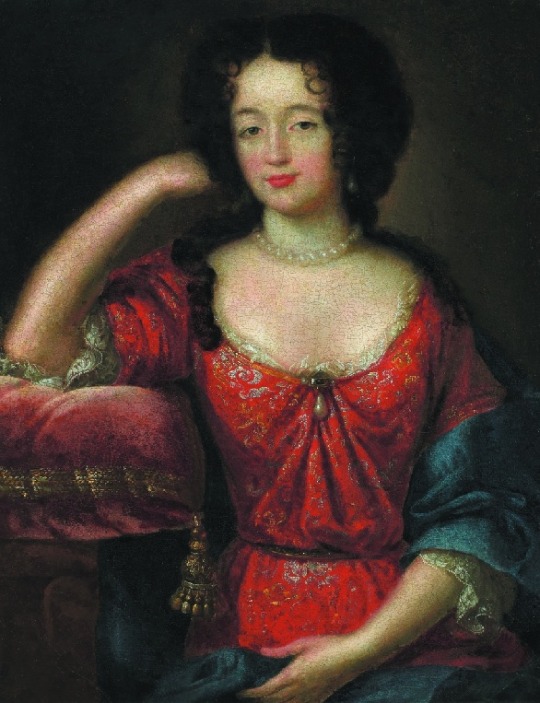

20 notes
·
View notes
Text
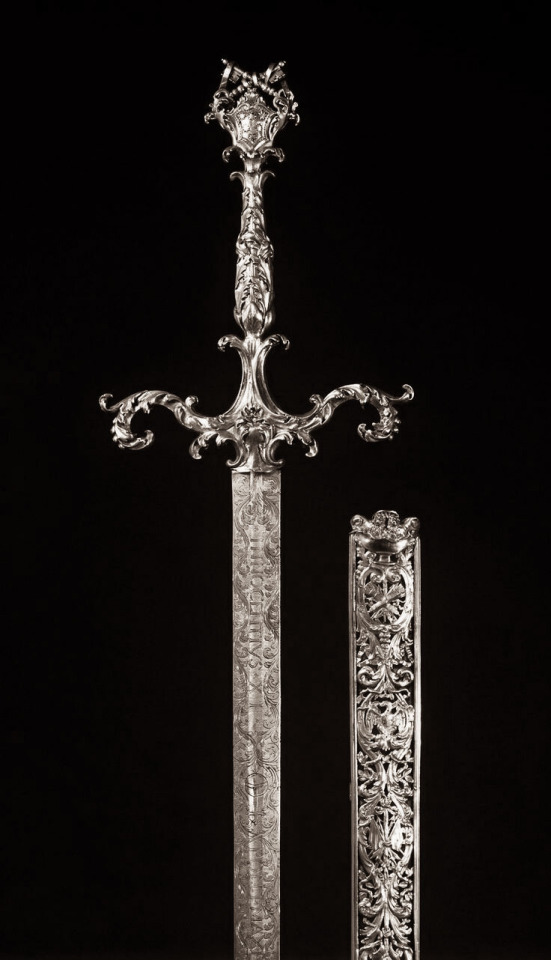
Consecrated sword presented by Pope Innocent XI to John III Sobieski - 'Lion of Lechistan' (1675)
7 notes
·
View notes
Photo
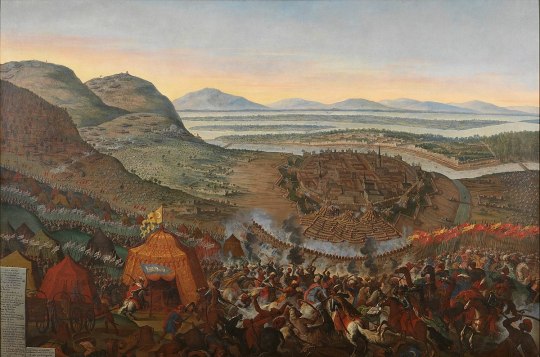
Frans Geffels - The relief of Vienna in 1683 - 1683-4
oil on canvas, height: 184 cm (72.4 in); width: 272 cm (107 in)
Vienna Museum at Karlsplatz, Austria
The Battle of Vienna took place at Kahlenberg Mountain near Vienna on 12 September 1683 after the imperial city had been besieged by the Ottoman Empire for two months. The battle was fought by the Holy Roman Empire (led by the Habsburg monarchy and the Polish–Lithuanian Commonwealth, both under the command of King John III Sobieski) against the Ottomans and their vassal and tributary states. The battle marked the first time the Commonwealth and the Holy Roman Empire had cooperated militarily against the Ottomans, and it is often seen as a turning point in history, after which "the Ottoman Turks ceased to be a menace to the Christian world". In the ensuing war that lasted until 1699, the Ottomans lost almost all of Hungary to the Holy Roman Emperor Leopold I.
The battle was won by the combined forces of the Holy Roman Empire and the Polish–Lithuanian Commonwealth, the latter represented only by the forces of the Crown of the Kingdom of Poland (the march of the Lithuanian army was delayed, and they reached Vienna after it had been relieved). The Viennese garrison was led by Feldzeugmeister of the Imperial Army (Holy Roman Empire) Ernst Rüdiger Graf von Starhemberg, an Austrian subject of Holy Roman Emperor Leopold I. The overall command was held by the senior leader, the king of Poland, John III Sobieski, who led the relief forces.
The opposing military forces were those of the Ottoman Empire and its vassal states, commanded by Grand Vizier Merzifonlu Kara Mustafa Pasha. The Ottoman army numbered approximately 90,000 to 300,000 men (according to documents on the order of battle found in Kara Mustafa's tent, initial strength at the start of the campaign was 170,000 men). They began the siege on 14 July 1683. Ottoman forces consisted, among other units, of 60 ortas of Janissaries (12,000 men paper-strength) with an observation army of some 70,000 men watching the countryside. The decisive battle took place on 12 September, after the arrival of the united relief army.
Historians maintain that the battle marked the turning point in the Ottoman–Habsburg wars, a 300-year struggle between the Holy Roman and Ottoman Empires. During the 16 years following the battle, the Austrian Habsburgs gradually recovered and dominated southern Hungary and Transylvania, which was largely cleared of Ottoman forces. The battle is noted for including the largest known cavalry charge in history.
Frans Geffels, known in Italy as Francesco Geffels (25 August 1624 – 18 February 1694) was a Flemish painter, printmaker, architect, stage designer and designer of ephemeral structures for solemn and festive occasions. After training in his native Antwerp, he was mainly active in Mantua, where he was prefetto delle fabbriche to the Duke, a role that gave him the direction of the artistic and construction activities undertaken by the Ducal court. He worked also on projects for the local aristocratic class of Mantua. In addition, he completed projects for the Liechtenstein princes and for the imperial court in Vienna.
He was both a canvas and fresco painter. He created portraits, history subjects, military scenes, architectural scenes and genre art, in particular merry companies. Geffels is mainly remembered as the designer of some of the key examples of Baroque architecture in Mantua.
21 notes
·
View notes
Text
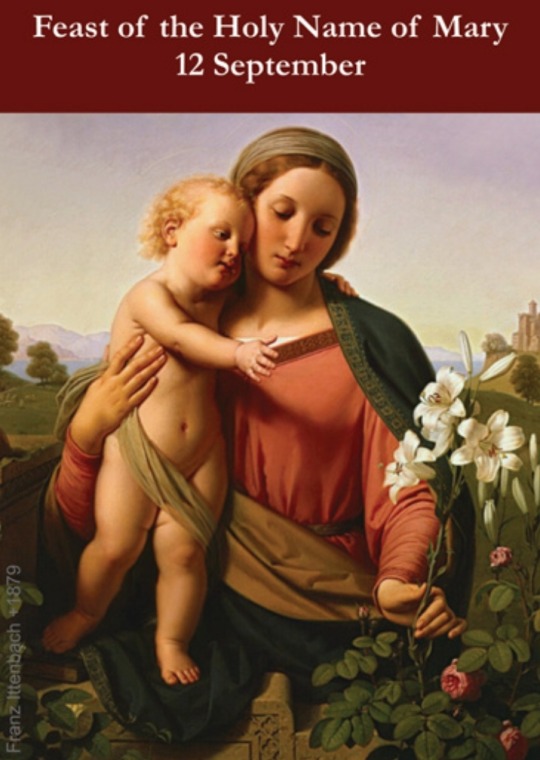
The Roman Catholic Church celebrates the Feast of the Holy Name of Mary on September 12 in honor to the name of Mary, the mother of Jesus.
This feast day has been celebrated since 1684 when Pope Innocent XI officially included it in General Roman calendar but actually dates back to 1513, as local celebrations were held in Spain.
The entry in the Roman Martyrology about the feast speaks of it in the following terms:
“The Holy Name of the Blessed Virgin Mary, a day on which the inexpressible love of the Mother of God for her Holy Child is recalled, and the eyes of the faithful are directed to the figure of the Mother of the Redeemer, for them to invoke with devotion.”
Before the Battle of Vienna in 1683, John III Sobieski placed his troops under the protection of the Blessed Virgin Mary.
In the following year, to celebrate the victory, Pope Innocent XI inserted the feast into the General Roman Calendar, assigning to it the Sunday within the octave of the Nativity of Mary, which falls on September 8.
To honor the name of Mary, this Blessed Virgin Mary, Mother of Jesus our Savior – we continue the tradition set many centuries ago by our forefathers.
There is wisdom in honoring the mother of Jesus, the virgin named Mary – as she is our spiritual mother as well. She will lead you to her Son.
7 notes
·
View notes
Text
The battle of Zieleńce (1792)
On occasion of the battle of Zieleńce, which took place during the Polish–Russian War of 1792 (War in Defence of the Constitution) let me show you some images related.

Aleksander Orłowski "Prince Józef Poniatowski in the battle of Zieleńce”
The battle took place on the 18th of June, 1792. By that time the war has been going on for a month already, and since its beginning the Polish-Lithuanian Commonwealth Army had been in retreat. On the eve of that day, on the 17th of June, Poniatowski, the commander of the of the Kingdom of Poland's Crown Army, finally received the long awaited reinforcements. And the next day the Poles defeated one of the Russian formations of general Irakly Morkov.
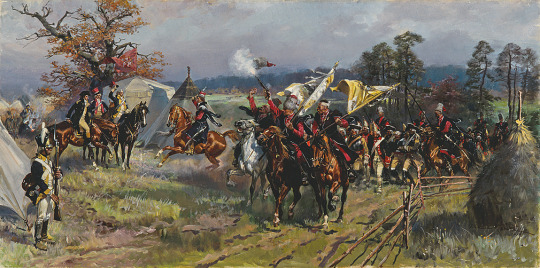
Wojciech Kossak "After the Battle of Zieleńce" (Józef Poniatowski together with Tadeusz Kościuszko are reviewing the parade of Polish troops)
Besides Poniatowski other Polish commanders like Tadeusz Kościuszko, Michał Lubomirski, Stanisław Mokronowski and Józef Wielhorski took part on the battle.
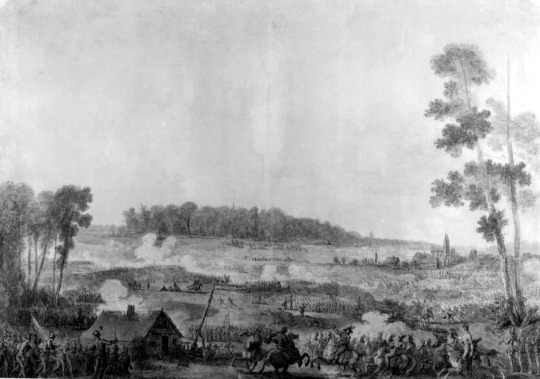
Jean Pierre Norblin, “The battle of Zieleńce”
That victory over Russian was the first Polish one since John III Sobieski, and to honor it the king Stanisław Augustus created the War Order called Virtuti Militari. Prince Józef was among the first people decorated with it.

Star to the Grand Cross of Virtuti Militari which belnged to Prince Józef Poniatowski
#józef poniatowski#poniatowski#1792#Polish-Russian war#the battle of Zieleńce#aleksander orłowski#wojciech kossak#jean pierre norblin#tadeusz kościuszko#virtuti militari
12 notes
·
View notes
Text

Artist (company): unknown - author (malarz dworski-naśladowca Daniela Schultza)
Title (name): Portrait of the Sons of John III Sobieski: Aleksander (1677–1714),
Konstanty (1680–1726) and Jan (1683–1685)
National Museum Krakow
4 notes
·
View notes
Text
3 Useless Facts
1) The Winged Hussar were an elite Polish cavalry. They got their name from the wing decorations that gave them the appearance of angels, hence them also being nicknamed Angels of Death. They were also unusual in that much of their ranks were comprised from szlachta, the Polish nobility. Their most famous fight was the Battle of Vienna in 1683 when they arrived to defend the Austrian city from an Ottoman siege. This attack was led by the King of Poland himself at the time, John III Sobieski, and is what the song “Winged Hussars” by Sabaton is talking about.
2) The “Brides of Dracula” are actually never referred to as such in the media. Likewise, while most adaptations portray them as women unrelated to Dracula whom he turned into his vampire lovers, their exact relationship to him is never specified in the novel either. In fact, it’s a common theory among scholars that they might have actually been meant to be his wife and daughters, as two of them are emphasized as looking VERY like the Count, but one does not. The two who look like the Count also defer to the one who does not, telling her that it’s right to “begin” on Jonathon, suggesting she has some status among them, as a mother might. I honestly really like this idea and would love to see it explored in media at some point. It probably has been, in the vast sea of Dracula-based works out there, I’m just not aware of it.
3) Many people know that the velociraptors in Jurassic Park, both the novel and films, are much larger in Crichton’s version, standing at six feet, whereas real velociraptors were only the size of a turkey. Crichton’s version more resembles a deinonychus. However, what most people DON’T realize is that they’re a dead ringer for a Utahraptor. . .which was only discovered AFTER the movie. One of the people who worked on the movie apparently said that it was just bizarre to design and create this animal, and then have something that looks exactly like it discovered for real later.
Tagged by: @meegan420
Tagging: Anyone with some to share
6 notes
·
View notes
Text

Jozef Brandt - Departure from Wilanow of John III Sobieski and Marysienka (1897)
0 notes
Text
John Sobieski III

Name: King Sobieski
Aliases:
The Angel of Death
Unbreakable King
The Winged Knight
Humanity’s Greatest Defender
Vanguard of Europe
Species: human
Height: 6’2”
Age: 390+
Gender: male
Origin: Warsaw, Poland
Status: Alive
Affliction:
Humanity
Einherjar
Winged Hussars (former)
King of Poland (former)
Voice Actor:
Jarrod Greene (English VA)
Ryōtarō Okiayu (Japanese VA)
Quote:
“Have no worry Valkyrie Brunhilde, I am going to show you that even I, a mere human, can reach the level of Tlaloc.”
Appearance:
John is a tall, muscular man with neat black hair, mustache, and blue eyes, lastly, he had six fingers on each hand, allowing him to more effectively wield his lance.
John dons a full set of gunmetal plated armor decorated golden accents, a red cape is draped over his left shoulder and reaches down to his ankles.
Personality:
John is a confident, tactical, and fierce individual shown when he fearlessly defended all of Europe against the invading Ottoman Empire.
Abilities:
Master of the Lance
Master Horseback Rider
Master with Flintlock Weaponry
Supernatural Abilities:
Golden Age
Equipment:
Lance decorated with a long golden blade which could bisect an entire city with one swing.

0 notes
Text
Events 11.11 (before 1920)
308 – At Carnuntum, Emperor emeritus Diocletian confers with Galerius, Augustus of the East, and Maximianus, the recently returned former Augustus of the West, in an attempt to end the civil wars of the Tetrarchy.
1028 – Constantine VIII dies, ending his uninterrupted reign as emperor or co-emperor of the Byzantine Empire of 66 years.
1100 – Henry I of England marries Matilda of Scotland, the daughter of Malcolm III of Scotland and a direct descendant of the Saxon king Edmund Ironside; Matilda is crowned on the same day.
1215 – The Fourth Council of the Lateran meets, defining the doctrine of transubstantiation, the process by which bread and wine are, by that doctrine, said to transform into the body and blood of Christ.
1500 – Treaty of Granada: Louis XII of France and Ferdinand II of Aragon agree to divide the Kingdom of Naples between them.
1572 – Tycho Brahe observes the supernova SN 1572.
1620 – The Mayflower Compact is signed in what is now Provincetown Harbor near Cape Cod.
1634 – Following pressure from Anglican bishop John Atherton, the Irish House of Commons passes An Act for the Punishment for the Vice of Buggery.
1673 – Second Battle of Khotyn in Ukraine: Polish–Lithuanian Commonwealth forces under the command of Jan Sobieski defeat the Ottoman army. In this battle, rockets made by Kazimierz Siemienowicz are successfully used.
1675 – Gottfried Leibniz demonstrates integral calculus for the first time to find the area under the graph of y = ƒ(x).
1724 – Joseph Blake, alias Blueskin, a highwayman known for attacking "Thief-Taker General" (and thief) Jonathan Wild at the Old Bailey, is hanged in London.
1750 – Riots break out in Lhasa after the murder of the Tibetan regent.
1750 – The F.H.C. Society, also known as the Flat Hat Club, is formed at Raleigh Tavern, Williamsburg, Virginia. It is the first college fraternity.
1778 – Cherry Valley massacre: Loyalists and Seneca Indian forces attack a fort and village in eastern New York during the American Revolutionary War, killing more than forty civilians and soldiers.
1805 – Napoleonic Wars: Battle of Dürenstein: Eight thousand French troops attempt to slow the retreat of a vastly superior Russian and Austrian force.
1813 – War of 1812: Battle of Crysler's Farm: British and Canadian forces defeat a larger American force, causing the Americans to abandon their Saint Lawrence campaign.
1831 – In Jerusalem, Virginia, Nat Turner is hanged after inciting a violent slave uprising.
1839 – The Virginia Military Institute is founded in Lexington, Virginia.
1855 – A powerful earthquake occurs in Edo, Japan, causing considerable damage in the Kantō region from the shaking and subsequent fires. It had a death toll of 7,000–10,000 people and destroyed around 14,000 buildings.
1865 – Treaty of Sinchula is signed whereby Bhutan cedes the areas east of the Teesta River to the British East India Company.
1869 – The Victorian Aboriginal Protection Act is enacted in Australia, giving the government control of indigenous people's wages, their terms of employment, where they could live, and of their children, effectively leading to the Stolen Generations.
1880 – Australian bushranger Ned Kelly is hanged at Melbourne Gaol.
1887 – Four convicted anarchists were executed as a result of the Haymarket affair.
1889 – The State of Washington is admitted as the 42nd state of the United States.
1911 – Many cities in the Midwestern United States break their record highs and lows on the same day as a strong cold front rolls through.
1918 – World War I: Germany signs an armistice agreement with the Allies in a railroad car in the forest of Compiègne.
1918 – Józef Piłsudski assumes supreme military power in Poland – symbolic first day of Polish independence.
1918 – Emperor Charles I of Austria relinquishes power.
1919 – The Industrial Workers of the World attack an Armistice Day parade in Centralia, Washington, ultimately resulting in the deaths of five people.
1919 – Latvian forces defeat the West Russian Volunteer Army at Riga in the Latvian War of Independence.
0 notes